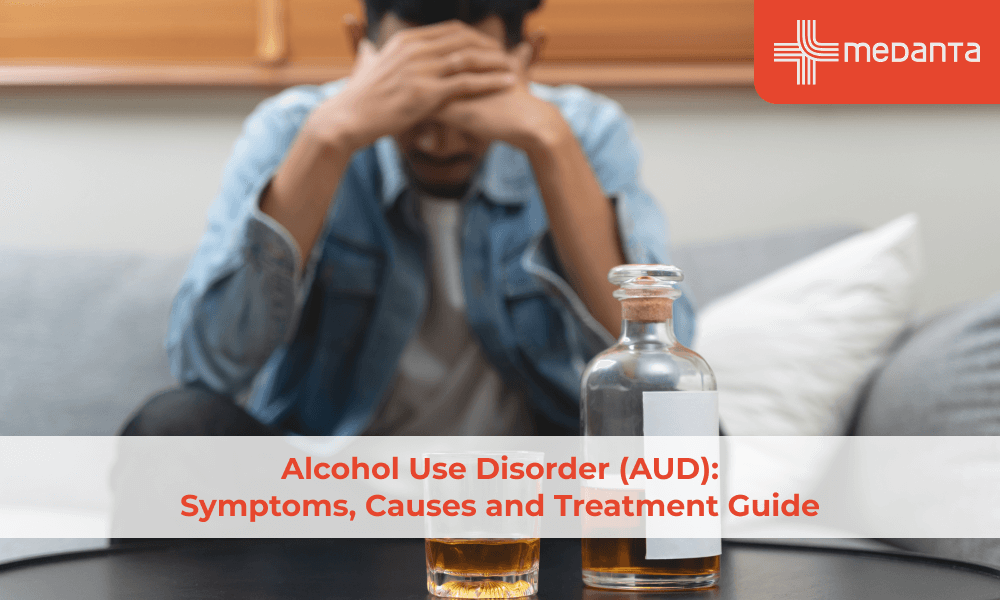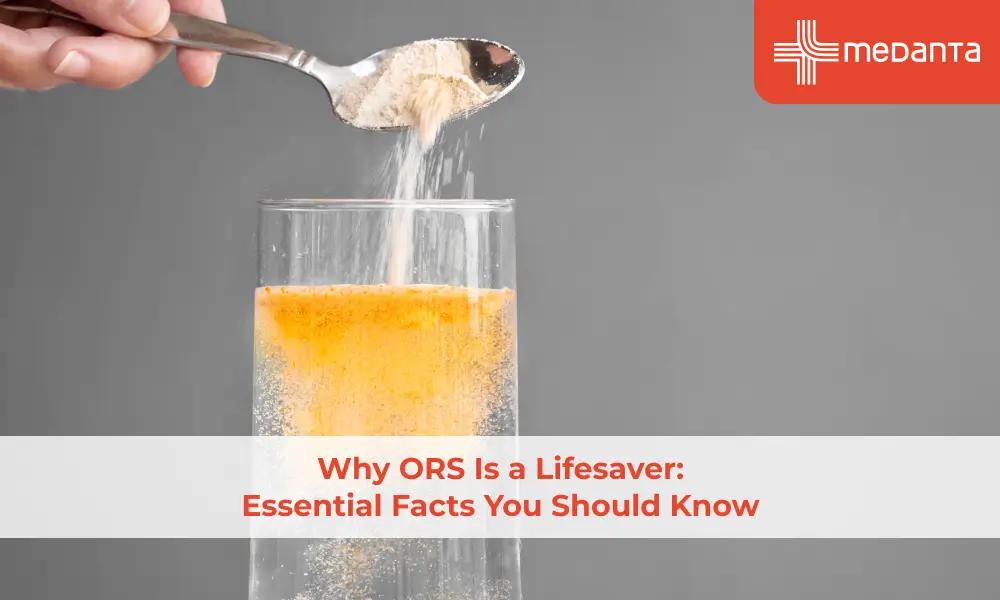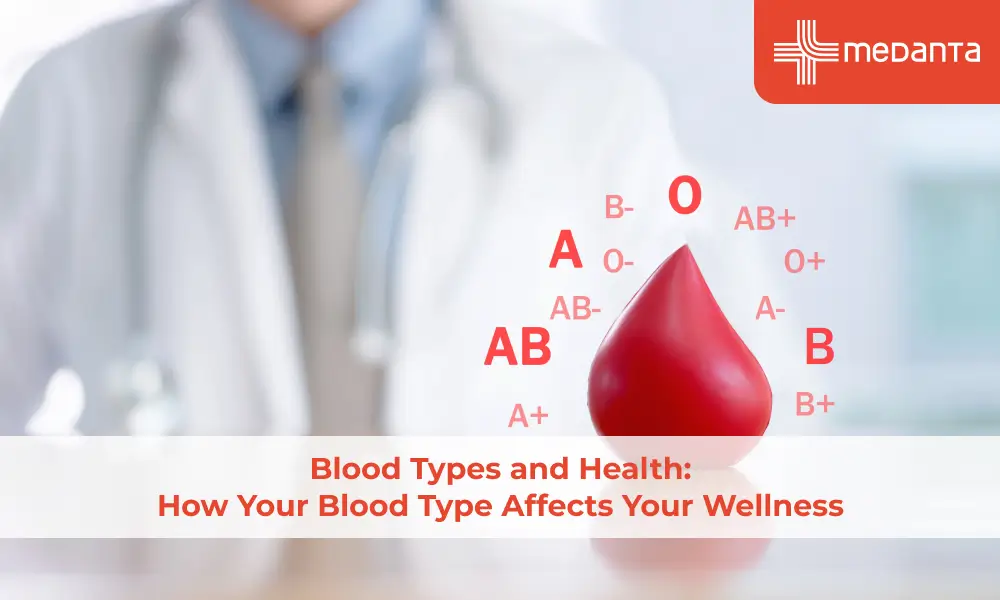Alcohol Use Disorder (AUD): Symptoms, Causes and Treatment Guide

TABLE OF CONTENTS
Alcohol use disorder impacts millions of people, making it the most commonly diagnosed substance use disorder. AUD is a clinical condition that makes it impossible to control alcohol use even as it creates problems in life. This term covers what doctors used to call alcohol abuse, alcohol dependence, alcoholism, and alcohol addiction. Alcohol addiction ranges from mild to severe cases.
Binge drinking often serves as an early warning signal. Men who consume five or more drinks within two hours meet the binge drinking threshold, while women reach this level at four drinks. A person's genetic makeup accounts for about 60% of their risk of developing this disorder. People who begin drinking before turning 15 have higher chances of developing alcohol use disorder as adults.
This piece covers everything about alcohol use disorder - from symptoms and mechanisms to health effects and treatment options. Recognising these warning signs can equip you to seek help before serious health issues emerge. These complications include liver disease, cardiovascular problems, and certain types of cancer.
What is Alcohol Use Disorder?
Many people worldwide have trouble with alcohol, but each person's struggle looks different. Alcohol use disorder (AUD) is a medical condition that goes beyond just drinking too much sometimes.
How is it different from casual drinking
People who drink casually do it once in a while and responsibly. They stay in control of their drinking habits. These drinkers can stop whenever they need to and rarely face any negative effects from alcohol.
AUD tells a different story. People with this condition find it hard or impossible to control their drinking even when bad things happen. Here's what makes casual drinking and AUD so different:
Casual drinkers stay in control and can stop drinking whenever they want
Problem drinkers drink more often and sometimes face consequences but can quit when needed
People with AUD can't stop drinking even when it hurts their relationships, work, health, or safety
Casual drinking doesn't always lead to AUD. Your chances of developing this condition depend on several things, especially your genes. But drinking too much at once—five or more drinks for men or four or more for women within two hours—could be a warning sign.
Doctors might diagnose AUD if someone shows at least two of these signs in a year:
Drinking more or longer than planned
Failed attempts to cut back or quit
Too much time spent drinking or recovering
Strong urges to drink
Drinking gets in the way of responsibilities
Keeps drinking despite relationship problems
Gives up other activities to drink
Takes risks while drinking
Drinks despite health or mental problems
Needs more alcohol to feel the same effects
Gets withdrawal symptoms
Common Symptoms of Alcohol Use Disorder
The ability to spot alcohol use disorder (AUD) symptoms is vital to start treatment early. These signs demonstrate themselves in many ways and affect your physical health, behaviour, and emotions. Doctors use these symptoms to diagnose the condition and determine its severity.
Physical signs to look out for
The physical symptoms of alcohol use disorder usually start slowly and become more visible as time passes. The original sign might be an alcohol flush reaction—facial redness that happens because your body can't process alcohol properly. More serious physical signs appear as drinking continues.
Other physical symptoms include:
Night sweats
Trembling hands or "the shakes."
Unexplained bruises from falls
Poor personal hygiene
Weight changes from appetite shifts
Balance and coordination problems
Yellowish skin (jaundice) that shows liver problems
Stomach pain, nausea, or digestive issues
Physical symptoms become intense during withdrawal. You might experience a racing heart, sweats, tremors, nausea, vomiting, and sometimes seizures. People with AUD often keep drinking to avoid these uncomfortable withdrawal effects.
Changes in behaviour and mood
AUD substantially changes a person's behaviour and emotional state. The biggest sign is an ongoing need for alcohol—a powerful craving that fills their thoughts. This happens with clear personality changes.
Notable behavioural and mood changes include:
Drinking more or longer than planned
Unsuccessful attempts to reduce drinking
Too much time getting, using, or recovering from alcohol
Continued drinking despite relationship issues
Dropping important activities to drink
Drinking in dangerous situations
Drinking despite known physical or mental health problems
Alcohol affects your emotional balance and causes dramatic mood swings. Someone with AUD might show anger, irritability, aggression, emotional outbursts, depression, or verbal abuse at work or home.
Memory issues are common, too. Many people with alcohol dependence experience memory gaps or "blackouts" after drinking. These brain function problems can disrupt daily life, causing struggles with everyday tasks.
How symptoms can vary from mild to severe
AUD ranges from mild to severe based on the number of symptoms you experience. Doctors use specific criteria from the Diagnostic & Statistical Manual of Mental Disorders (DSM-5) to evaluate severity.
The severity levels work like this:
Mild AUD: You have 2-3 symptoms from the criteria
Moderate AUD: You have 4-5 symptoms
Severe AUD: You have six or more symptoms
Symptoms typically get worse as the condition moves from mild to severe. To cite an instance, someone with mild AUD might drink more than planned sometimes, while a person with severe AUD experiences intense cravings, needs more alcohol for the same effect, and gets withdrawal symptoms when trying to stop.
Daily life becomes harder as severity increases. Mild cases might sometimes affect work or relationships. Severe cases make alcohol the centre of someone's life and often lead to job loss, broken relationships, and serious health problems. Studies show many people with alcohol dependence have trouble with daily activities.
Spotting these symptoms early, whatever their severity, matters because proper treatment can stop the condition from getting worse.
What Causes Alcohol Use Disorder?
Alcohol use disorder doesn't develop from just one cause - it comes from a mix of different factors working together. Scientists have found that biological, psychological, and environmental elements all play a role in why some people develop this condition and others don't.
Family history and genetics
A person's genes strongly affect their risk of developing alcohol use disorder. Research shows genetic factors make up about 45-65% of the likelihood of alcohol dependence. People whose parents have alcohol use disorder are two to six times more likely to develop alcohol problems compared to others. This higher risk comes in part from shared genes, though the environment also plays a role.
Mental health and trauma
Mental health conditions often occur alongside alcohol use disorder through several paths:
People with existing psychiatric disorders might develop AUD because they use alcohol to handle their symptoms
Using alcohol—especially as a teenager—can lead to psychiatric disorders
Both conditions often share the same genetic risks and environmental factors
People who have common mental disorders like depression, anxiety, or phobia are twice as likely to report an alcohol use disorder compared to others. This connection works both ways - regular heavy drinking links to depression symptoms.
Childhood trauma raises the risk of later alcohol problems by a lot. The Adverse Childhood Experiences (ACE) study showed that people with four or more adverse childhood experiences were 7.2 times more likely to become alcohol dependent. People who have both trauma-related symptoms and alcohol dependence usually face more severe conditions and worse treatment results.
Social and environmental factors
Social and cultural elements shape how people use alcohol. Family settings influence drinking behaviours, particularly during childhood and teenage years. Kids growing up where drinking seems normal or encouraged face bigger risks.
Environmental influences include:
How easy it is to get alcohol (areas with more availability show more problems)
Society's acceptance of drinking
Pressure from friends
Cultural views about alcohol
Economic factors
Stress from work or relationships
Research shows neighbourhoods with more alcohol outlets have higher rates of binge drinking.
Alcohol use disorder results from genetic risks mixing with psychological tendencies and environmental triggers. This knowledge has changed our view from seeing the condition as a moral failure to recognising it as a complex health issue that needs an all-encompassing approach to treatment.
How Alcohol Use Disorder Affects Your Health
Alcohol abuse damages almost every organ system in the body. The damage ranges from immediate effects right after drinking to devastating long-term consequences that can cut life short.
Short-term and long-term physical effects
Your body reacts quickly when alcohol enters the bloodstream. Just minutes later, you'll notice reduced inhibitions, slurred speech, and poor coordination. Higher blood alcohol levels decrease cognitive functions and lead to confusion, memory issues, and risky decisions. Drinking too much at once can cause alcohol poisoning that leads to unconsciousness, breathing problems, and possible death.
The physical damage gets worse over time and spreads throughout the body. The liver takes the biggest hit since it processes alcohol—problems start with fatty liver, progress to alcoholic hepatitis, and end up causing cirrhosis. Your cardiovascular system breaks down, too, and alcohol abuse links directly to:
Cardiomyopathy (stretched, drooping heart muscle)
Irregular heartbeat
High blood pressure
Increased stroke risk
Alcohol tears through the digestive system by causing stomach inflammation, ulcers, and pancreatitis. Your drinking habits can trigger at least 40 medical conditions, including cancers in the mouth, throat, oesophagus, liver, breast, and colorectal areas.
Mental health complications
Alcohol abuse and mental health problems go hand in hand. Heavy drinking changes your brain's structure and chemistry. People with alcohol problems face substantially higher rates of anxiety, depression, and other psychiatric disorders compared to others.
Other mental health issues include:
Damaged social skills from alcohol's toxic effects on the brain
Problems reading facial emotions
Trouble understanding voice tone
Reduced ability to understand others' perspectives
Increased suicidal tendency
Effect on relationships and daily life
Alcohol abuse tears apart personal relationships and disrupts daily routines. Time and energy that should go to work and family get consumed by drinking.
Families often suffer the most. One in five American adults grew up with a relative who had alcohol problems. These children face four times the risk of developing drinking problems themselves.
Treatment
Treatment for alcohol use disorder comes in many forms. Studies show that only 10% of people with this condition get medication-assisted treatment. The right approach usually combines multiple strategies that match each person's needs.
Medications approved for alcohol addiction
Several medications can help reduce drinking and support recovery. Three main medications have approval specifically to treat alcohol use disorder:
Acamprosate regulates brain chemicals that long-term alcohol use disrupts. People who have stopped drinking find it helps prevent relapse by reducing their cravings.
Naltrexone blocks opioid receptors in the brain. This reduces alcohol's pleasurable effects and decreases the urge to drink.
Disulfiram causes unpleasant physical reactions like nausea, flushing, and vomiting when someone drinks alcohol. This creates a strong deterrent for people committed to staying sober.
Therapy and counselling
Behavioural approaches tackle addiction's psychological aspects:
Cognitive-behavioural therapy (CBT) helps people spot their triggers and build healthier coping strategies. Patients learn to change thoughts that lead to drinking.
Motivational enhancement therapy builds a person's drive to change through focused, short-term sessions.
Family therapy supports both the individual and their loved ones. This matters because alcohol problems affect the whole family.
Support groups play a key role in recovery that lasts.
When medical detox is needed
Stopping alcohol suddenly can be dangerous for physically dependent people. Medical detox becomes necessary when:
Withdrawal symptoms show up (anxiety, sweating, tremors, nausea)
Someone has a history of severe withdrawal
Daily drinking exceeds 20 units
Medical complications exist
Severe withdrawal can lead to hallucinations, seizures, or death without proper supervision. Medical detox typically lasts 2-7 days. Doctors use medications like benzodiazepines to keep patients safe.
Medical detox marks just the first step toward recovery. It rarely works as a standalone treatment.
Conclusion
Alcohol use disorder is one of the most common health conditions that doesn't get enough treatment worldwide. AUD is nowhere near casual drinking. It affects millions of people, regardless of their background or social status. The physical and mental health damage can be devastating. People suffer from liver disease, higher cancer risk, depression, and broken relationships. Your family history makes up about 60% of the risk. Trauma and environmental factors also contribute by a lot to developing AUD.
The facts are grim, but people struggling with alcohol dependence have hope. The best treatments combine medicines like naltrexone and acamprosate with proven therapies like cognitive-behavioural approaches. Support groups give people the community connection they need to stay in recovery. People need to understand that AUD is a real medical condition, not a moral failing. This helps reduce stigma and encourages them to ask for help.
Getting help early makes a big difference in recovery. Many people beat alcohol use disorder and rebuild their lives with the right support and treatment. Spotting warning signs in ourselves and our loved ones is a vital first step.
FAQs
How can I avoid drinking alcohol in social situations?
There are several strategies you can use: prepare responses to decline drinks, opt for non-alcoholic beverages like mocktails, choose low-alcohol options if you do drink, keep track of your consumption, and set a personal limit before attending events.
Why is alcohol addiction so difficult to overcome?
Alcohol addiction is challenging to overcome because chronic heavy drinking can alter brain regions involved in motivation, decision-making, impulse control, and cognitive functions. These changes can make it increasingly difficult to stop drinking without professional help as the disorder progresses.
What treatment modalities are available for alcohol use disorder?
Treatment for alcohol use disorder often involves a combination of approaches. These can include FDA-approved medications like acamprosate or naltrexone, various forms of therapy such as cognitive-behavioural therapy, support groups like AA or SMART Recovery, and, in some cases, medically supervised detoxification. The most effective treatment plan is typically tailored to the individual's specific needs.






